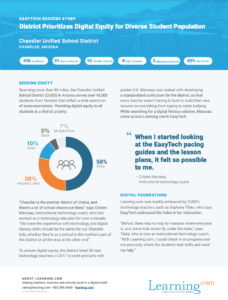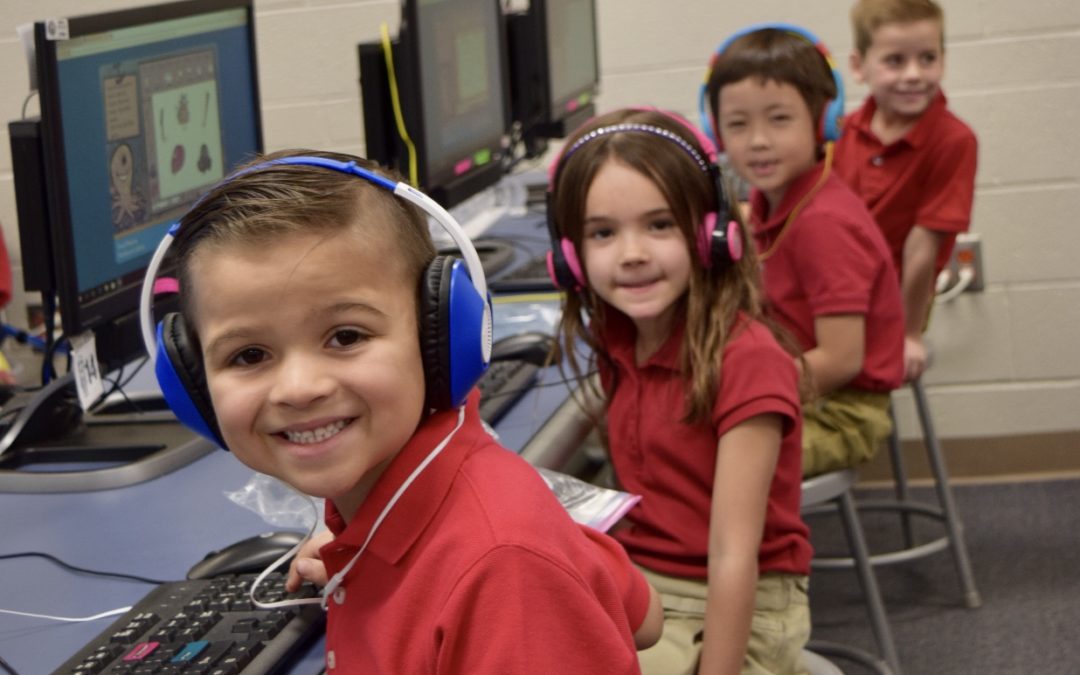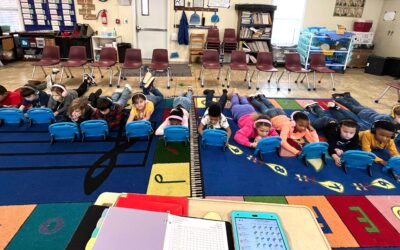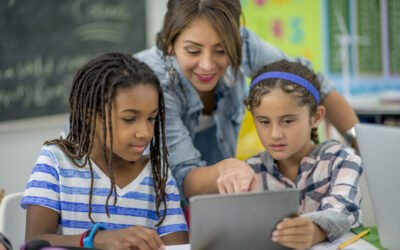“When I started looking at the EasyTech pacing guides and the lesson plans, it felt so possible to me,” Marceau says.
In classrooms, instructional technology teachers were delighted to have their entire digital curriculum — from digital citizenship to presentation skills — all in one place, aligned to their standards, and with built-in reporting tools. Moreover, the highly visual lessons made digital curriculum easily accessible to many students who spoke different languages at home.
Today, Marceau and her colleagues continue building on the digital literacy foundations they established, including extending digital skills developed in the lab into traditional classrooms.
“With Learning.com, everything is in one place, from typing to presentation skills to the digital citizenship side. Having everything all in one tool is very, very helpful.”
— Curt Landon, instructional technology coach

What to know more? Watch the webinar featuring instructional technology coaches from CUSD:

Christine Byrd
Author at Learning.com
Christine has over 17 years of experience as an award-winning writer, thorough researcher, detail-oriented editor, and communications strategist. She specializes in providing internal and external communications for corporate, academic and nonprofit leaders.
Further Reading
Digital Skills for North Carolina Students
In our district, like most others, the use of digital learning tools has catapulted since the pandemic. With students online more than ever, it’s...
Why Teaching Kids to Code Supports Community Development
Teaching kids to code undoubtedly prepares them for the future of work. But what does this mean for the communities that helped them become career...
Enhancing Digital Citizenship by Understanding Confirmation Bias
Teaching confirmation bias as part of the digital literacy curriculum in schools is essential in today's information-saturated world. Confirmation...




